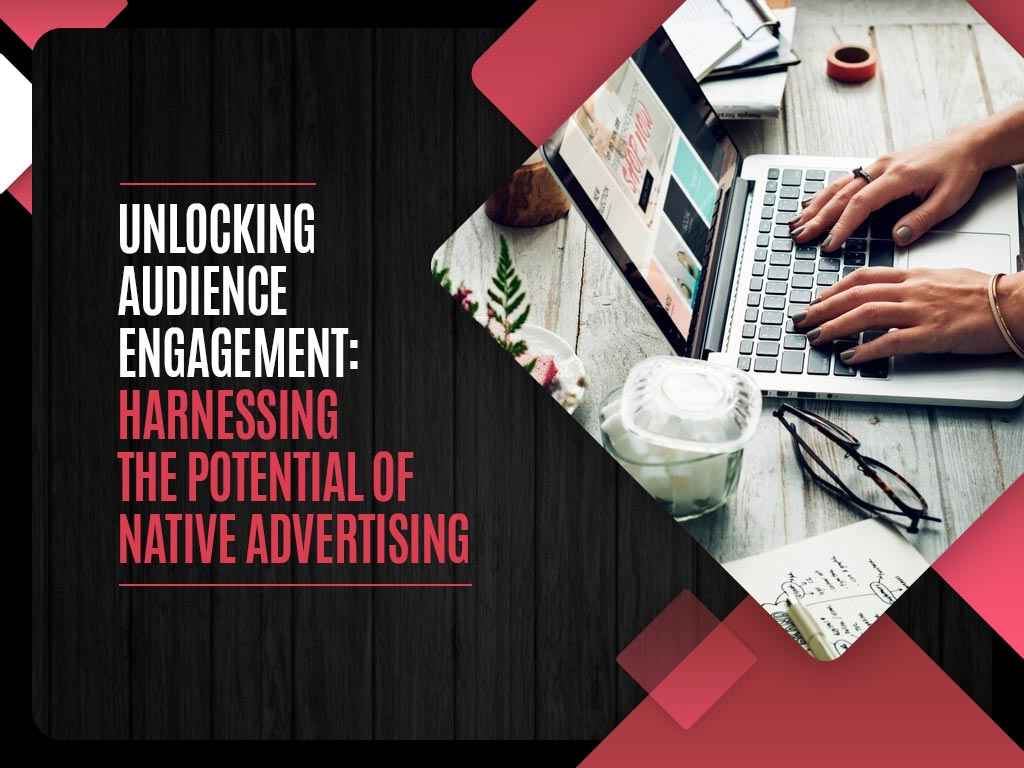Unlocking Audience Engagement: Harnessing the Potential of Native Advertising

Native advertising has developed into a powerful tool for businesses to interact with consumers more effectively and intuitively, which greatly improves performance and ROI. The annual income of the Chinese native advertising business increased by 1100% in just 7 years! Performance is a single word that can encompass all the elements influencing this appeal.
What is Native Advertising?
Online marketing that mimics the appearance and function of the content on the platform where it appears is known as “native advertising.” As you can see from the definition of native advertising, unlike standard banner advertisements or pop-ups, native ads seek to add value to the audience by presenting pertinent and interesting material that is in line with their interests.
Native advertising is becoming more and more common since it enables companies to market their goods or services without interfering with the user experience, resulting in more successful campaigns with greater consumer engagement rates.
Benefits of Native Advertising
Given its many benefits, native advertising is an enticing marketing tactic for businesses. Let’s look at some key benefits that set native advertising apart from traditional advertising tactics:
Integrated seamlessly
The seamless integration is one of the main advantages. These advertisements mix in with the platform’s natural content, giving the impression that they are not even there. For instance, a sponsored piece on a news website offers insightful information about the sector in which a company operates without being overtly promotional.
Heightened interest
They have higher interaction rates since they adhere to the platform’s style and format. For instance, an in-feed advertisement on a social media site masquerades as a standard post in order to engage users and solicit their feedback.
Target audience
Because it is based on specific demographics, interests, or browsing patterns, marketers may precisely target the people they want to reach. For instance, depending on a user’s prior purchases, a recommendation widget on an e-commerce site proposes relevant products.
Enhanced trust and credibility
Well-done native advertisements add value to the audience through educational or amusing material, building the brand’s credibility. An example might be a sponsored recipe video on a food website that demonstrates a chef making a delectable dish with products from a particular business.
Disruption-free user experience
The user experience is enhanced by native adverts because they seamlessly blend with the user’s online activity. For instance, on an e-commerce platform, a promoted listing appears adjacent to organic search results, enhancing product discovery without obstructing browsing.
With all of these benefits, this is an alluring and effective choice for marketers, allowing them to interact and truly connect with their target audience while upholding a good user experience.
Conclusion
This field has evolved into an advantageous tool for businesses, promoting more rational and effective interactions with clients, thereby enhancing performance and boosting ROI. This marketing strategy seamlessly integrates into the platform’s content, adding valuable value by aligning with the audience’s interests without interfering with the audience’s online experience.
Native advertising offers a number of benefits. Due to its seamless integration, higher engagement rates, precise audience targeting, greater credibility and trust, and interruption-free user experience, it varies from conventional advertising tactics. With all of these advantages, native advertising is a desirable and efficient choice for marketers, enabling them to communicate with their target market in real-life situations while maintaining a positive user experience.
Want to learn how paid marketing differs from native advertising? Learn here.

